Include a Topper!
-
Happy Birthday Banner
$9.00
Add Ons
Your cart is currently empty!
Since 1949 celebrating 75 years. Order online or call us at 1 800 GAMBINO (426-2466)
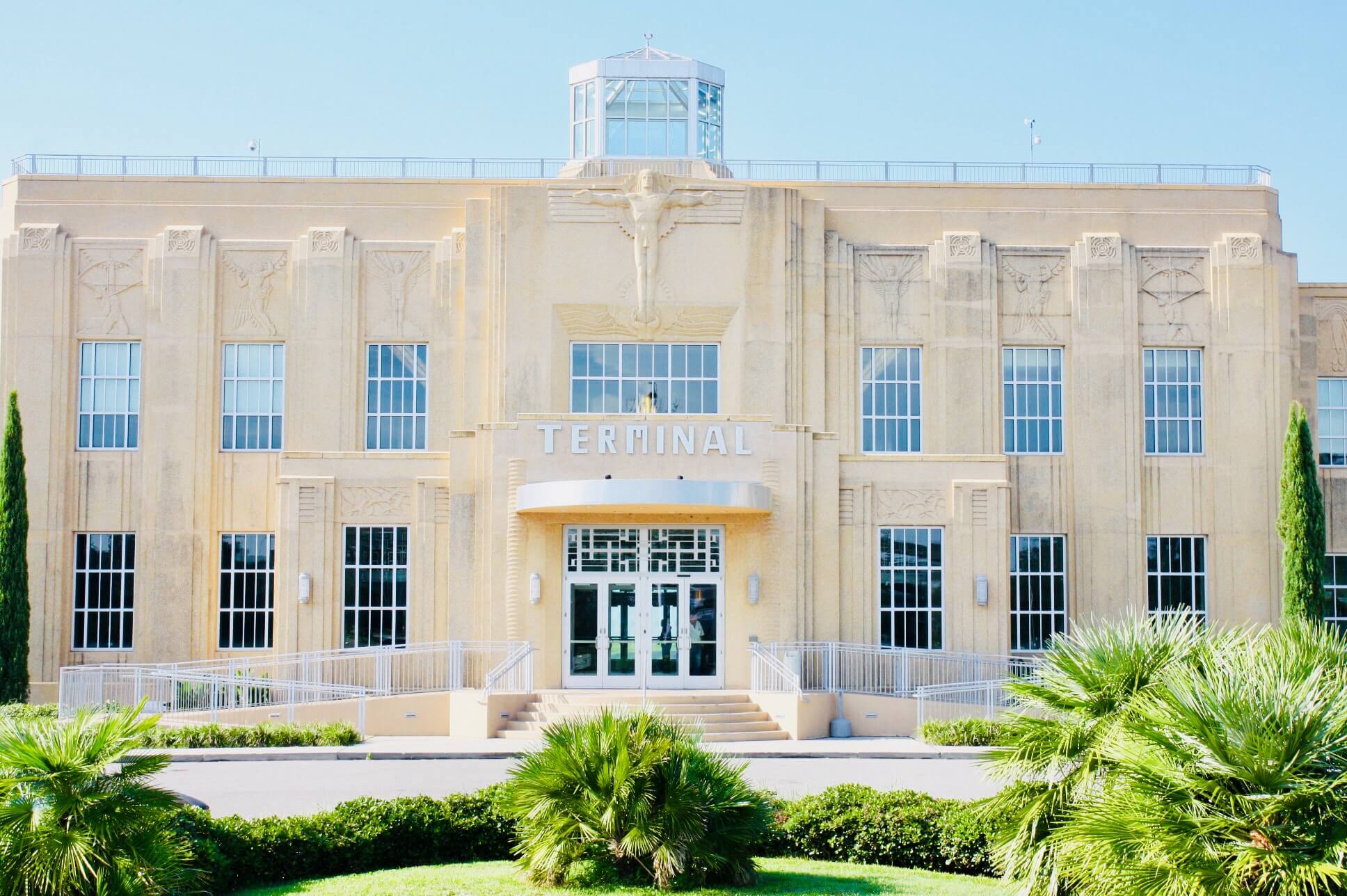
When Lakefront Airport opened on February 9, 1934, it was just 30 years after the Wright Brothers’ famous first flight in Kitty Hawk. (And, fun fact: after the brothers’ flight, their plane was lifted off the ground by a heavy gust of wind and sent tumbling end over end through a field. We’re happy to not be on that plane!)
Things got better, of course, but not that much better. For example, 24 airline pilots met in Chicago in 1931 to form the first pilots’ union because it was still a pretty treacherous job. The Irish Times reports that “among their demands was improved safety because half of them were destined to die in air crashes.” (We’re also happy not to be on those planes!)
Thanks to advances in aviation technology around World War I, we were no longer in aviation’s “pioneer era.” It was still a far cry from the safe skies of today, but the 1930s were getting safer and there was a lot of excitement around the promise of flight.
So, when Lakefront Airport opened, it was a pretty big deal for the city of New Orleans: our first airport!
But, we were surprised about how newsworthy the construction of our airport was, even outside the Crescent City.
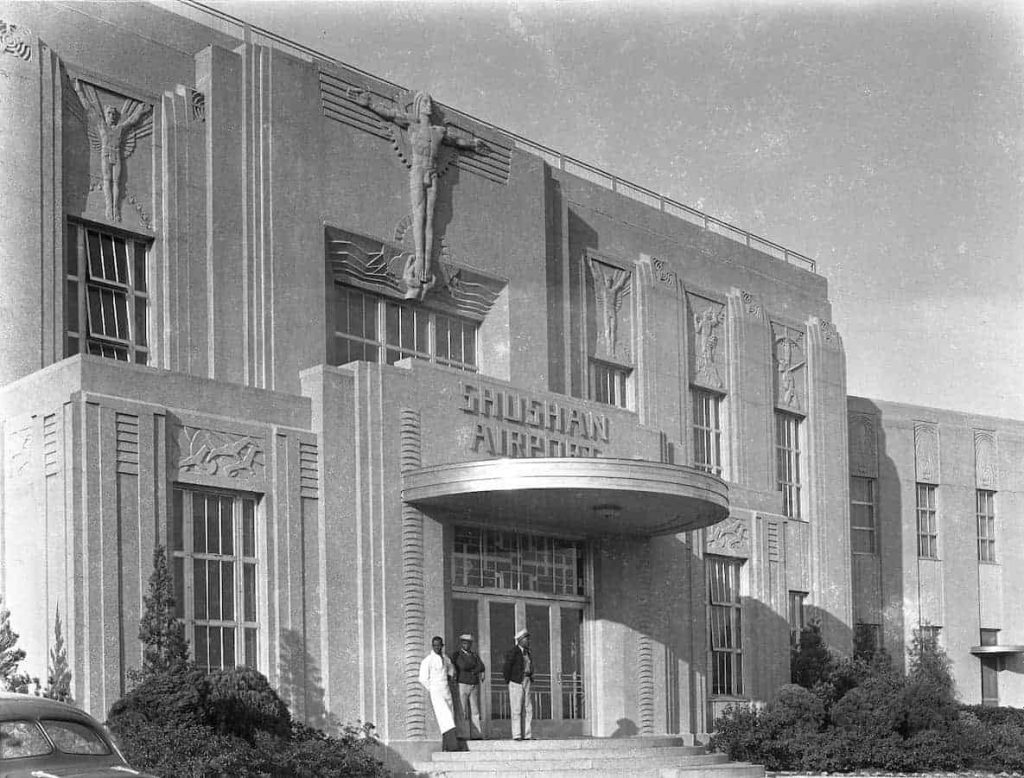
A Milestone
At the time of its opening, Lakefront Airport—then named Shushan Airport—wasn’t just the biggest airport in the region. It was the largest airport in all of America, and the very first combined land and seaplane air terminal on the globe!
The groundbreaking airport was named after Abraham Shushan, former president of the Orleans Parish Levee Board. He was a huge proponent of the airport’s construction and more importantly, a friend of Governor Huey P. Long. Unfortunately for Mr. Shushan, the airport would only carry his name for half a decade because, in 1939, he was convicted of mail fraud and his name was unceremoniously dropped.
Lakefront Airport’s terminal was—and still is—recognized for its unique and impressive art deco-style, designed by the same architectural team that built Long’s 34-story Capitol building in Baton Rouge.
Walking into the airport in its early years, visitors were greeted by eight separate ten-by-ten-foot murals arranged in a circular display around the terminal like points on a compass. These were designed by Spanish-born painter and sculptor, Xavier Gonzalez, who was a favorite of the New Deal-era agencies commissioning artists to decorate public buildings.
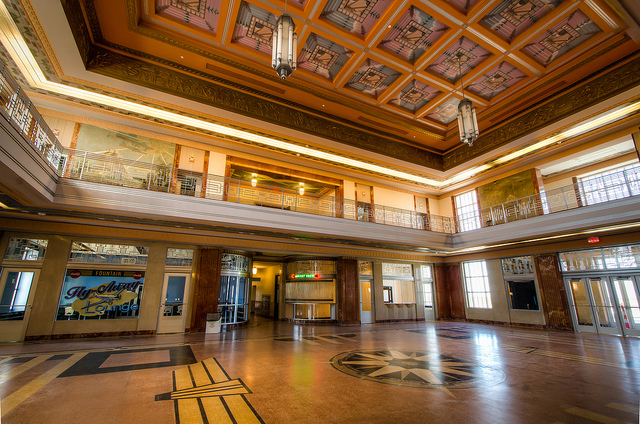
Gonzalez’ work can be seen in post offices and courthouses around Louisiana. His art combines Cubism, American Regionalism and the works of Mexican mural painters to add an international element to 1930s New Orleans art.
There’s no doubt the airport would have been quite a place for even the most important of guests to arrive. In 1937, just three years after opening, New Orleans’ airfield received such a guest.
Special Guest
On May 22, 1937, Amelia Earhart made contact with Shushan Airport. One of the most famous pilots in the world was unexpectedly about to land!
Her hope was to arrive unnoticed, but as soon as she made that necessary radio contact, word spread of Earhart’s incoming. (Way to spill the beans, radio control tower…)
In the amount of time it took for her and her customized plane, Electra, to get from Plaquemine’s Parish to the lakefront, the tarmac filled with citizens and reporters hoping to catch a glimpse of Earhart, the first female aviator to fly solo across the Atlantic Ocean. Now, the pilot and best-selling author was attempting to become the first female to fly around the globe.
“I thought my visit here would be a surprise and a secret,” she told the assembled crowd when she arrived, “but I see it isn’t.”
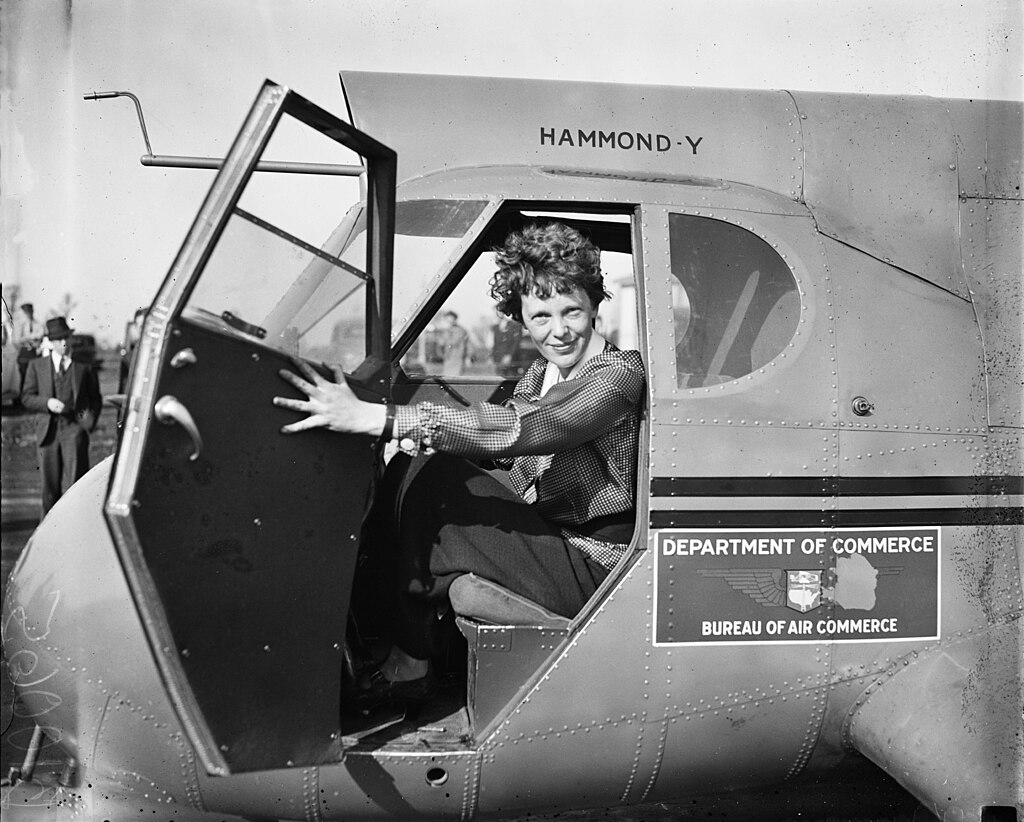
Her hope that her stop in New Orleans would be a low-profile one was for good reason. Just two months earlier, in March, Earhart and her team made her first attempt to fly around the world. Starting in Oakland, she flew to Hawaii, but there were major challenges on takeoff from Hawaii and she was forced to return Electra home for repairs.
It was a lot of hype for such an unceremonious ending. To avoid a similar situation, Earhart opted to begin her second attempt—this time eastward due to weather conditions—with a little less pomp. She would fly across the United States from Oakland to Burbank to Tucson to New Orleans and, finally, to Miami. If something went poorly, they could say it was a test. And if all went well, by the time she got to Miami, she would announce she was flying around the world.
So, even though very few people knew it at the time, when Earhart landed in New Orleans, she was making the third stop on her quest to become the first woman to circumnavigate the globe!
Crescent City connections
This was Earhart’s first time in the Crescent City, but she’d been to the area before, once stopping at the old Menefee Airport in St. Bernard Parish for fuel on a 1930 trip from California to New York. But that wasn’t the famous pilot’s only connection to the area.
Her navigator, Fred Noonan—who was often the only other person in the Electra with her—lived in New Orleans for several years. He worked for 22 years at sea as a Merchant Marine before deciding to switch careers and train to become a pilot at St. Bernard’s Menefee Airport. It is believed that made him the only person in the world to hold licenses as a first-class river pilot, the captain of a steam vessel, and as an airplane pilot.
Earhart’s mechanic, Ruckins McKneely, was from nearby St. Mary Parish. He was supposed to accompany Earhart and Noonan around the world (a 66% Louisianan team!), but—somewhat fortuitously for him—the leg from New Orleans to Miami was his last. His father was sick and so he made the decision to stay home with him.
Circling the globe
Earhart arrived in Miami the next day and, by the time she left on June 1, she announced she had begun her second attempt at a flight around the world. This trip, roughly following an equatorial path, would be the longest in history.
Earhart and Noonan flew to Puerto Rico and Brazil; Senegal and Sudan; India and Australia and many points in between. She had successfully made 30 flights on her journey and had just three remaining until she landed back in Oakland.
On July 2, she began the first of those final three legs, leaving Lae, New Guinea.
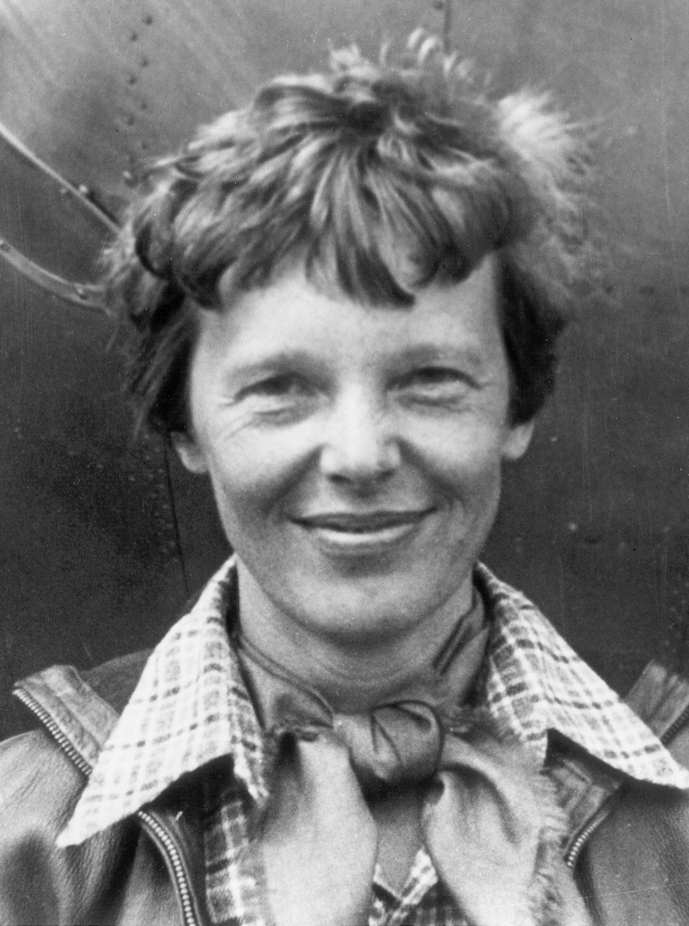
The duo was heading for Howland Island, a tiny, unincorporated territory of the United States in the middle of the Pacific Ocean, about 1,700 nautical miles southwest of Honolulu.
But Earhart never made it. Major communication issues between the Electra and the U.S. Coast Guard’s ship, Itasca, made it so Earhart and Noonan were unable to locate the island.
Earhart’s last attempted communications indicate the Electra was running low on fuel. Shortly thereafter, the duo was lost at sea, so close to completing their record-setting journey.
McKneely, Earhart’s Louisiana-born mechanic, was convinced that if he was on the flight as he was originally scheduled to be, his knowledge of the aircraft would have allowed him to stretch fuel supplies long enough to locate Howland Island and complete the flight.
The Modern Era
It’s hard to believe that only five weeks earlier, the famed pilot was addressing a crowd at our Shushan Airport.
Less than two years later, Shushan Airport was renamed to New Orleans Lakefront Airport after Shushan became embroiled in political scandal.
Then, in 1946, Lakefront Airport’s short time as the region’s dominant airport ended when Moisant Field was built. (Moisant is the “M” in MSY, which is now called Louis Armstrong International Airport.)
But that wasn’t the end of Lakefront Airport. A portion of the Cold War saw the building used as a nuclear fallout shelter. Later, runways and taxiways were added to serve private, corporate, military and commercial aircraft.
Sadly, renovations in the 1940s and ’60s covered up some of the terminal’s architectural features, including some of the building’s signature Art Deco style and its famed murals by artist Xavier Gonzalez. Fortunately, one of those murals has found its way into the Louisiana State Museum’s collection.
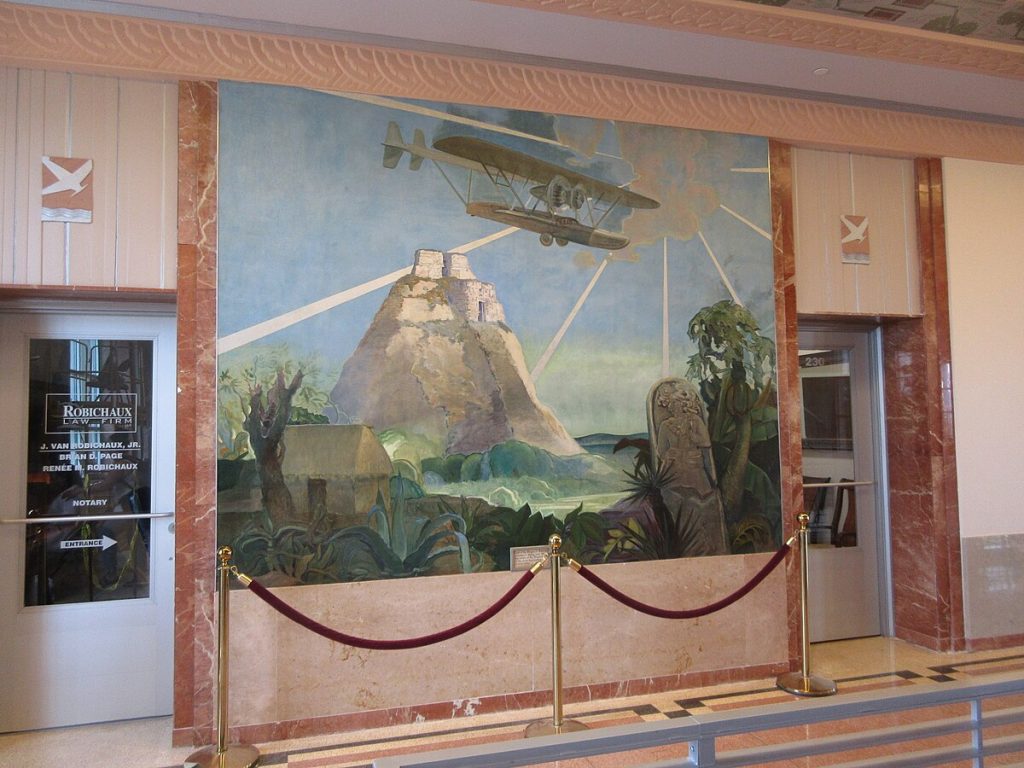
The airport took four feet of water during Hurricane Katrina, but $17 million of repairs have created a new life for Lakefront Airport! The Walnut Room has been restored as an entertainment venue, Messina’s Runway Cafe serves an amazing breakfast and lunch in a unique setting, friezes by Enrique Alferez and his famous Fountain of the Four Winds adorn the interior and exterior of the terminal, and Gonzalez’ magnificent murals are even being restored!
So even if you aren’t catching a regional flight, Lakefront Airport is an historic Art Deco masterpiece worth exploring along with a delicious meal which can be had from 8 a.m. until 3 p.m. on Tuesdays through Sundays!
Or, just pop in to take in a unique and often overlooked New Orleans gem, and to remember the extraordinary history that took place here so many decades earlier.